Different Types Of Stalactite Formations
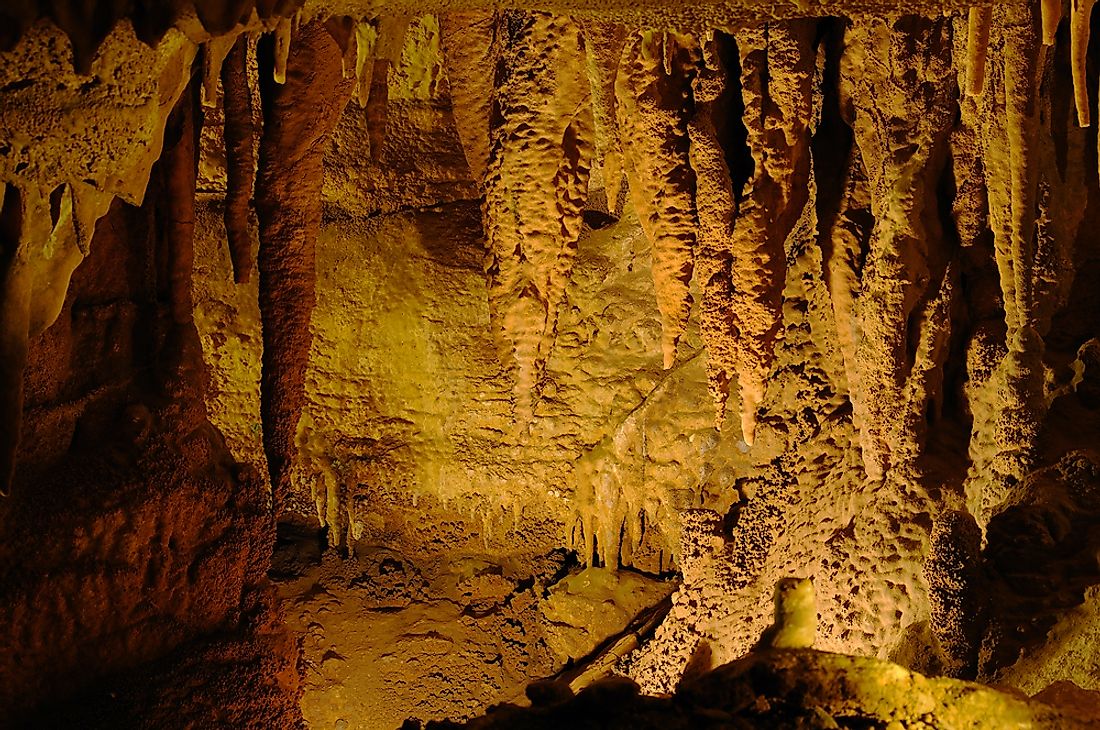
Stalactites are structures that hang from the roof of caves or hot springs. Such formations also occur on the surface of some man-made structures like mines and bridges. The stalactites vary in composition and may be composed of limestone, lava, mud, sand, sinter, peat, etc. Here is a list of some of the most common types of stalactites:
5. Concrete Stalactite
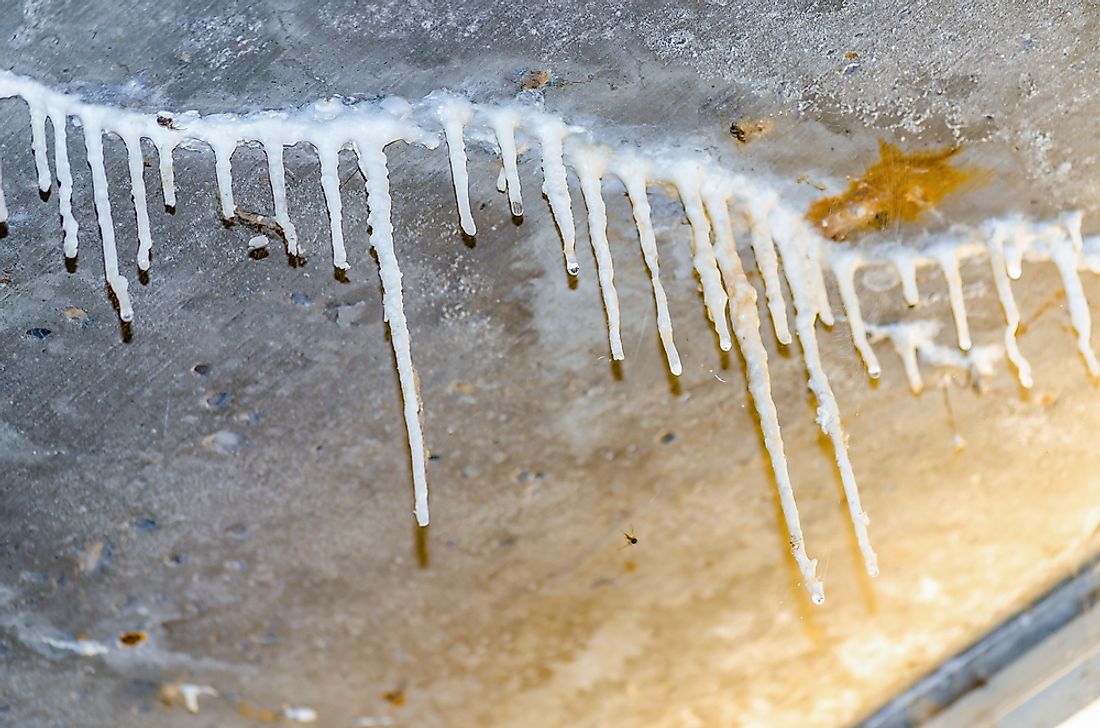
Often stalactites form on concrete or on plumbing when the water supply is laden with leaked minerals like calcium, magnesium, and some other ions. Such stalactites form much more rapidly than those in caves. Although the stalactites in caves are classified as speleothems, those in such man-made environments are classified as “calthemites.”
The formation of stalactites on concrete takes place via a chemical mechanism that is different from that of stalactite formation in limestone caves. Cement contains calcium oxide as part of its composition. When water is mixed with cement, calcium oxide reacts with water and calcium hydroxide is formed. Over time, when rainwater percolates through concrete and penetrates cracks in concrete, free calcium hydroxide in concrete will be carried by the water to the concrete’s edge. When this solution comes in contact with air, calcium hydroxide will react with carbon dioxide in the air to form calcium carbonate and get deposited on the concrete in the form of concrete stalactites. Such stalactites grow much faster than the stalactites in limestone caves.
4. Ice Stalactite
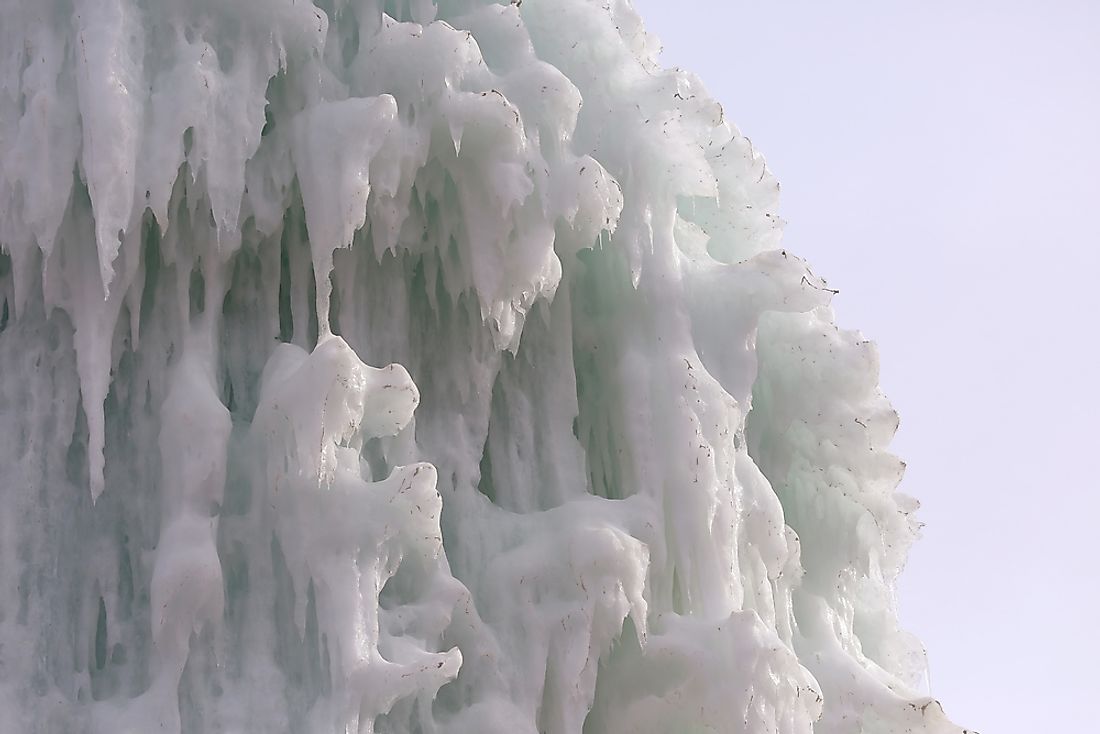
An ice stalactite is formed of ice and is found in caves or in other structures like sea ice. These stalactites are seasonal or permanent in nature. Ice stalactites form in a cave when surface water seep in through cracks in the ceiling of the cave and freeze if temperatures in the cave are below the freezing point of water. Water vapor in the cave environment might also freeze and accumulate on the ceiling as ice stalactite. Ice stalactites form quickly within the matter of a few days only.
Ice stalactites are also formed beneath sea ice. Such formations are called brinicles. When sea water in polar oceans freeze, the salt brine concentrates are removed from the sea ice by a physical process whereby dense and cold saline water moves downward from the sea ice towards the ocean waters. This saline water has a lower freezing point than the water of the surrounding ocean. Hence, when it comes in contact with the ocean water, ice formation takes place around the flow. In this way, an ice stalactite is formed.
3. Lava Stalactites
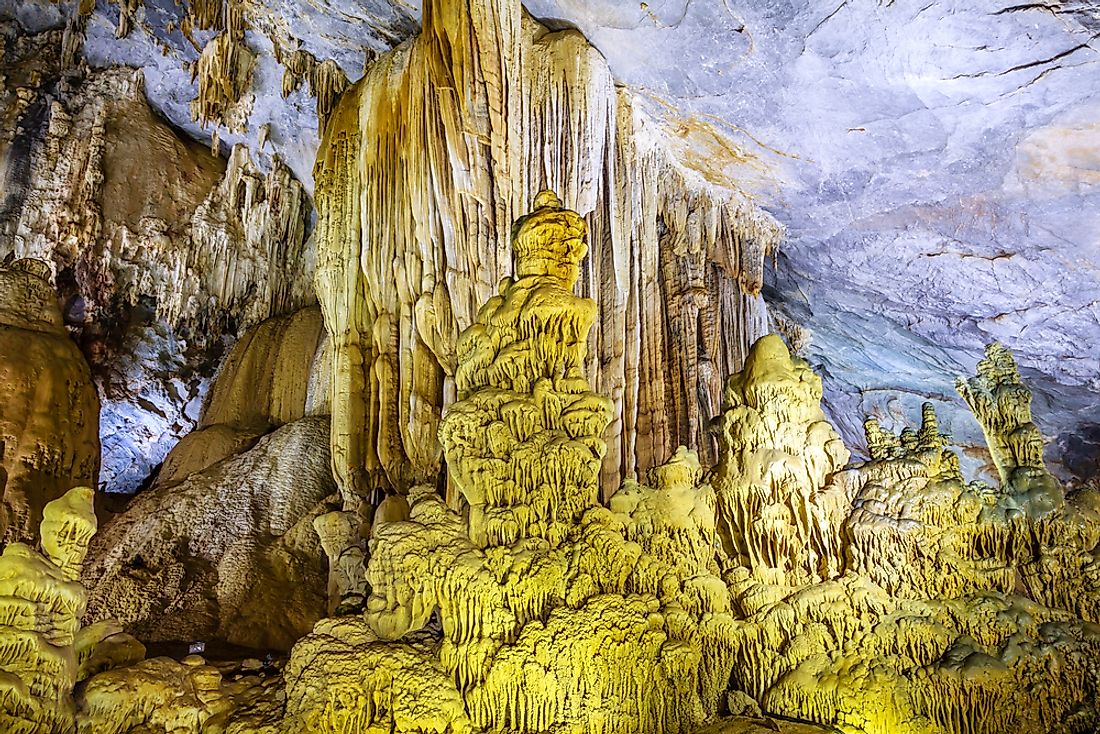
Lava stalactites are another type of stalactites that form in lava tubes or lava caves. Like limestone stalactites, lava stalactites are also formed by the deposition of materials on the cave ceilings. However, the former takes years to form while the latter forms within hours, days or weeks. The growth of lava stalactites is restricted to the flow of lava within the lava tube. Once the lava ceases to flow, the growth of the stalactite stops. Hence, if one were to break the stalactite at this point, it would not grow back again. These stalactites are formed by various mechanisms and are of various sub-types depending on the formation mechanism. The Cueva de los Verdes on the island of Lanzarote in the Canary Island is a lava tube that is famous for its lava stalactite formations. The lava tube is a major attraction in the region.
2. Limestone Stalactites
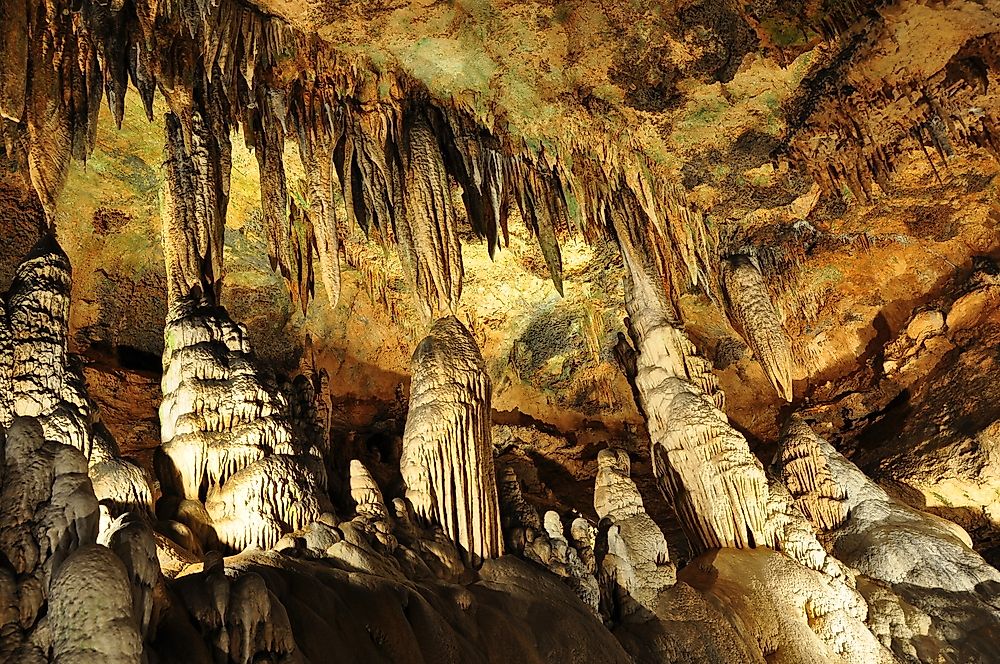
Stalactites in limestone caves in karst landscapes are the most common form of stalactites. These speleothems consist of calcium carbonate deposits formed as a result of precipitation from mineralized water solutions. In limestone caves, rocks of calcium carbonate are dissolved by water. The carbon dioxide content of water reacts with the dissolved calcium carbonate to form a solution of calcium bicarbonate. When the solution travels through the roof of the cave, it tends to drip downwards towards gravity. During this process, the solution comes in contact with the air which triggers a reverse reaction where carbon-dioxide is released from the solution leaving behind a deposit of calcium carbonate on the roof of the cave. Thus a stalactite is formed and it gradually grows over a period of years with further deposition of calcium carbonate. A slow drip rate is an important condition for the growth of a stalactite as it allows time for carbon-dioxide to degas from the solution into the air. If the drip rate is too fast, the solution will drip onto the cave floor where the degassing would occur and result in the formation of a stalagmite.
1. Other Stalactite Types
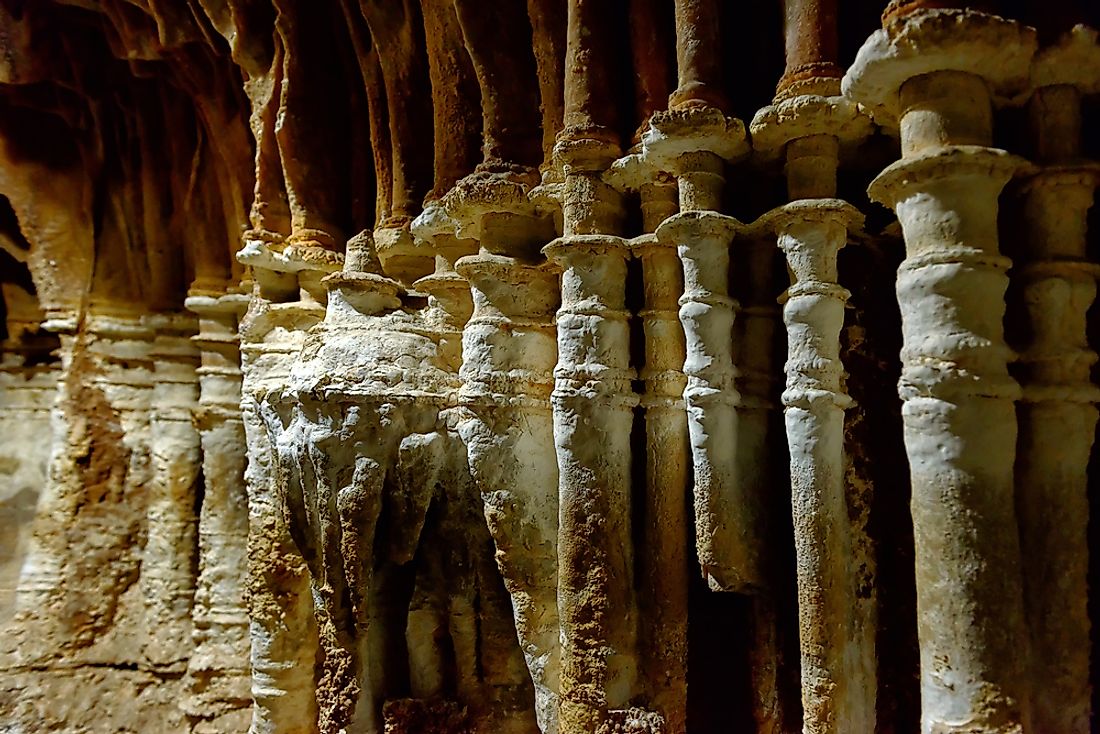
Splash Stalactites
Splash stalactites are formed of material splashed from flowing lava on the ceiling of the lava tube. As the splashed material oozes back down, it hardens to form a stalactite.
Tubular Stalactites
When the roof of a lava tube cools, a skin or outer layer is formed that traps semi-molten material inside. Often, lava trapped within the skin is forced to extrude out of tiny openings forming tubular stalactites. These structures are analogous to soda straws in solution caves and might be as long as 2 meters.
Shark Tooth Stalactites
Shark tooth stalactites are lava stalactites that are broad and tapering in appearance. These stalactites are usually formed when driblets of lava move downwards from a semi-solid ceiling. Often, such stalactites grow by accreting layers as the lava layer in the lava tube rise and fall. The shark tooth stalactites vary in size from a few millimeters to more than a meter in length.











